I love gender and sexual demography. It’s incredibly important work. Understanding the size and movements of gender and sexual minority populations can help assess what kinds of resources different groups might require and where those resources would be best spent, among others things. Gary J. Gates and Frank Newport initially published results from a then-new Gallup question on gender/sexual identity in 2012-2013 (here). At the time, 3.4% of Americans identified as either lesbian, gay, bisexual, or transgender. It’s a big deal – particularly as “identity” is likely a conservative measure when it comes to assessing the size of the population of LGBT persons. After I read the report, I was critical of one element of the reporting: Gates and Newport reported proportions of LGBT persons by state. As data visualizations go, I felt the decision concealed more than it revealed.
From 2015-2016, Gallup collected a second round of data. These new data allowed Gates to make some really amazing observations about shifts in the proportion of the U.S. population identifying themselves as LGBT. It’s a population that is, quite literally on the move. I posted on this latter report here. The shifts are astonishing – particularly given the short period of time between waves of data collection. But, again, data on where LGBT people are living was reported by state. I suspect that much of this has to do with sample size or perhaps an inability to tie respondents to counties or anything beyond state and time zone. But, I still think displaying the information in this way is misleading. Here’s the map Gallup produced associated with the most recent report:
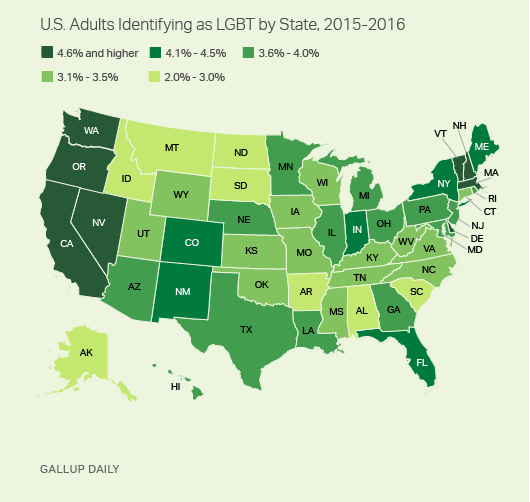 During the 2012-2013 data collection, Hawaii led U.S. states with the highest proportions of LGBT identifying persons (with 5.1% identifying as LGBT)–if we exclude Washington D.C. (with 10% identifying as LGBT). By 2016, Vermont led U.S. states with 5.3%; Hawaii dropped to 3.8%. Regardless of state rank, however, in both reports, the states are all neatly arranged with small incremental increases in the proportions of LGBT identifying persons, with one anomaly–Washington D.C. Of course, D.C. is not an anomaly; it’s just not a state. And comparing Washington D.C. with other states is about as meaningful as examining crime rate by European nation and including Vatican City. In both examples, one of these things is not like the others in a meaningful sense.
During the 2012-2013 data collection, Hawaii led U.S. states with the highest proportions of LGBT identifying persons (with 5.1% identifying as LGBT)–if we exclude Washington D.C. (with 10% identifying as LGBT). By 2016, Vermont led U.S. states with 5.3%; Hawaii dropped to 3.8%. Regardless of state rank, however, in both reports, the states are all neatly arranged with small incremental increases in the proportions of LGBT identifying persons, with one anomaly–Washington D.C. Of course, D.C. is not an anomaly; it’s just not a state. And comparing Washington D.C. with other states is about as meaningful as examining crime rate by European nation and including Vatican City. In both examples, one of these things is not like the others in a meaningful sense.
In my initial post, I suggested that the data would be much more meaningfully displayed in a different way. The reason D.C. is an outlier is that a good deal of research suggests that gender and sexual minorities are more populous in cities; they’re more likely to live in urban areas. Look at the 2015-2016 state-level data on proportion of LGBT people by the percentage of the state population living in urban areas (using 2010 Census data). The color coding reflects Census regions (click to enlarge).
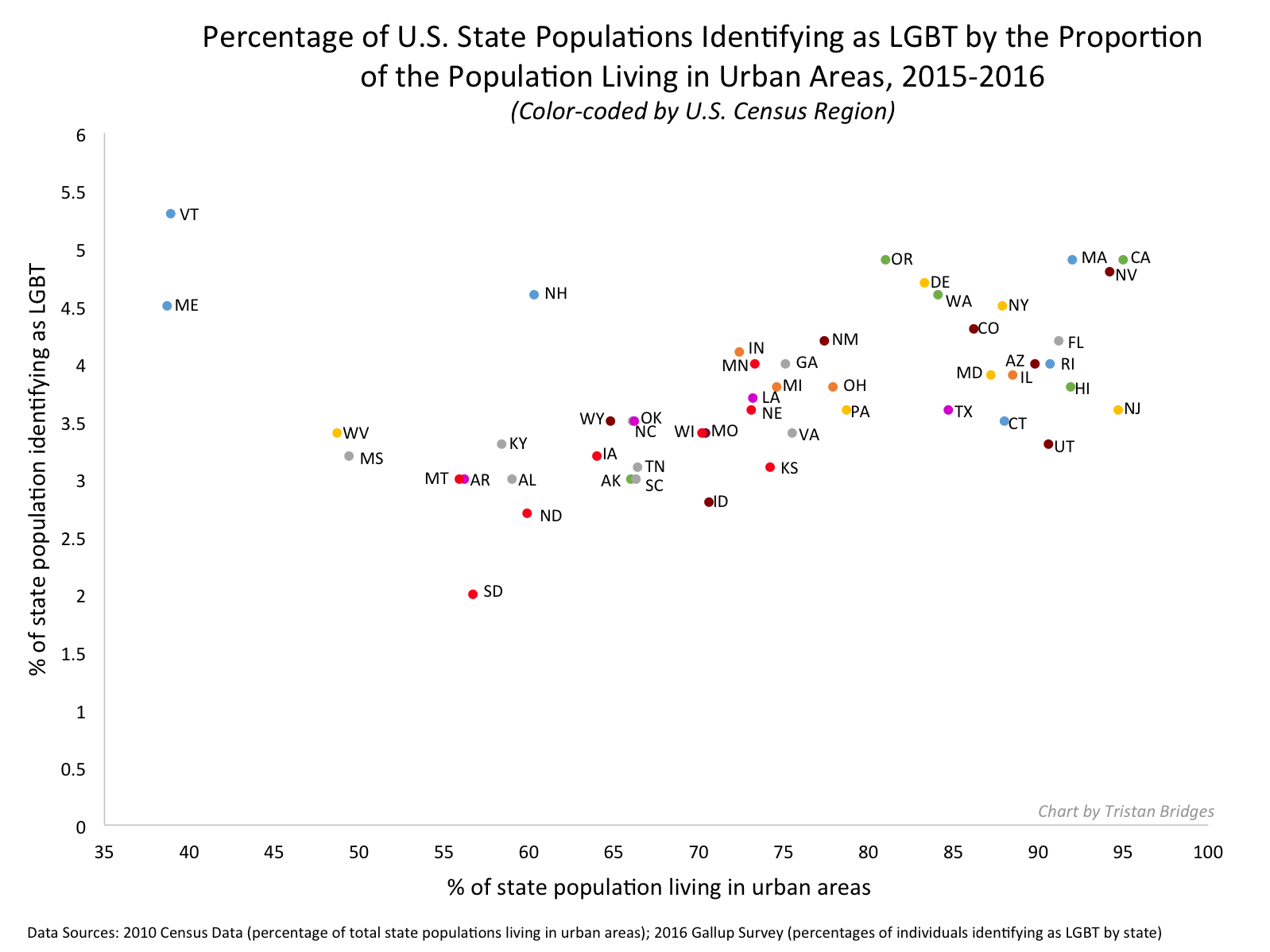 Vermont is still a state worth mentioning in the report as it bucks the trend in an impressive way (as do Maine and New Hampshire). But I’d bet you a pint of Cherry Garcia and a Magic Hat #9 that this has more to do with Burlington than with thriving communities of LGBT folks in the towns like Middlesex, Maidstone, or Sutton.
Vermont is still a state worth mentioning in the report as it bucks the trend in an impressive way (as do Maine and New Hampshire). But I’d bet you a pint of Cherry Garcia and a Magic Hat #9 that this has more to do with Burlington than with thriving communities of LGBT folks in the towns like Middlesex, Maidstone, or Sutton.
I recognize that the survey might not have a sufficient sample to enable them to say anything more specific (the 2015-2016 sample is just shy of 500,000). But, sometimes data visualizations obscure more than they reveal. And this feels like a case of that to me. In my initial post, I compared using state-level data here with maps of the U.S. after a presidential election. While the maps clearly delineate which candidate walked away with the electoral votes, they tell us nothing of the how close it was in each state, nor do they provide information about whether all parts of the state voted for the same candidates or were regionally divided. In most recent elections traditional electoral maps might leave you wondering how a Democrat ever gets elected with the sea of red blanketing much of the nation’s interior. But, if you’ve ever seen a map showing you data by county, you realize there’s a lot of blue in that red as well–those are the cities, the urban areas of the nation. Look at the results of the 2016 election by county (produced by physicist Mark Newman – here). On the left, you see county level voting data, rather that simply seeing whether a state “went red” or “went blue.” On the right, Newman uses a cartogram to alter the size of each county relative to its population density. It paints a bit of a different picture, and to some, it probably makes that state-level data seem a whole lot less meaningful.
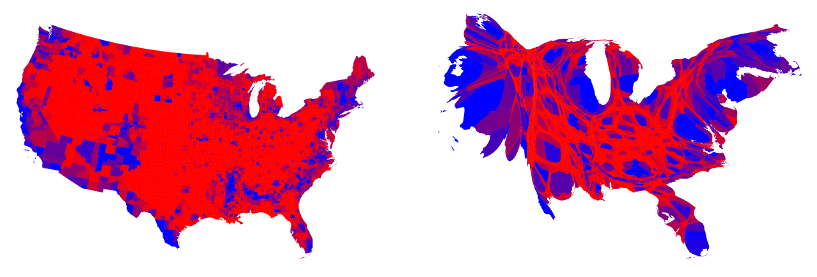
The more recent report also uses that state-level data to examine shifts in LGBT identification within Census regions as well. Perhaps not surprisingly, there are more people identifying as LGBT everywhere in the U.S. today than there were 5 years ago (at least when we ask them on surveys). But rates of identification are growing faster in some regions (like the Pacific, Middle Atlantic, and West Central) than others (like New England). Gates suggests that while this might cause some to suggest that LGBT people are migrating to different regions, data don’t suggest that LGBT people are necessarily doing that at higher rates than other groups.
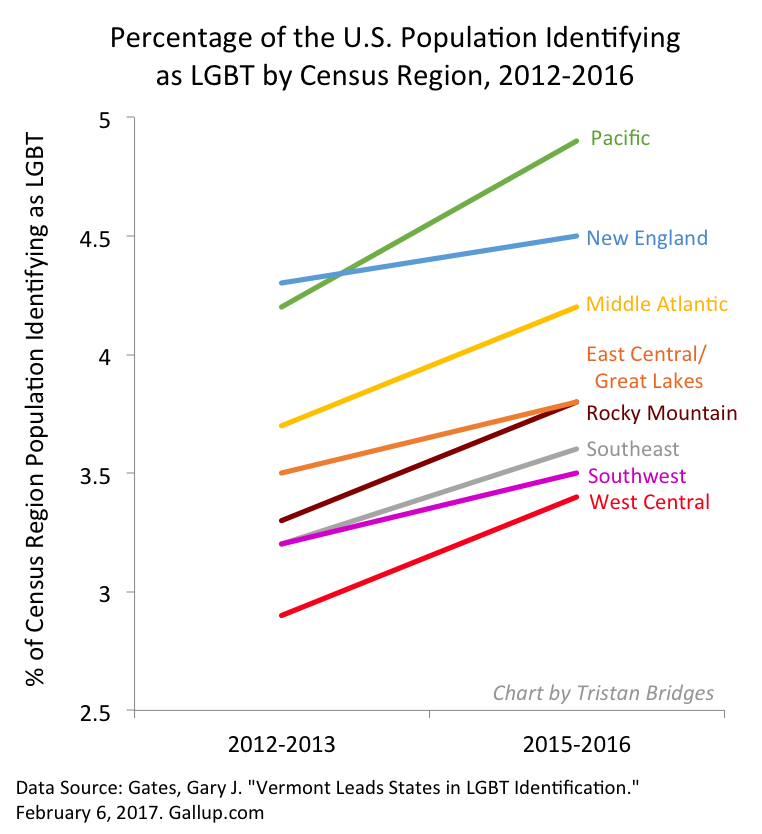 The recent shifts are largely produced by young people, Millennials in the Gallup sample. And those shifts are more pronounced in those same states most likely to go blue in elections. As Gates put it, “State-level rankings by the portion of adults identifying as LGBT clearly relate to the regional differences in LGBT social acceptance, which tend to be higher in the East and West and lower in the South and Midwest. Nevada is the only state in the top 10 that doesn’t have a coastal border. States ranked in the bottom 10 are dominated by those in the Midwest and South” (here).
The recent shifts are largely produced by young people, Millennials in the Gallup sample. And those shifts are more pronounced in those same states most likely to go blue in elections. As Gates put it, “State-level rankings by the portion of adults identifying as LGBT clearly relate to the regional differences in LGBT social acceptance, which tend to be higher in the East and West and lower in the South and Midwest. Nevada is the only state in the top 10 that doesn’t have a coastal border. States ranked in the bottom 10 are dominated by those in the Midwest and South” (here).
When we compare waves of data collection, we can see lots of shifts in the LGBT-identifying population by state (see below; click to enlarge). While the general trend was for states to have increasing proportions of people claiming LGBT identities in 2015-2016, a collection of states do not follow that trend. And this struck me as an issue that ought to provoke some level of concern. Look at Hawaii, Rhode Island, and South Dakota, for example. These are among the biggest shifts among any of the states and they are all against the liberalizing trend Gates describes.
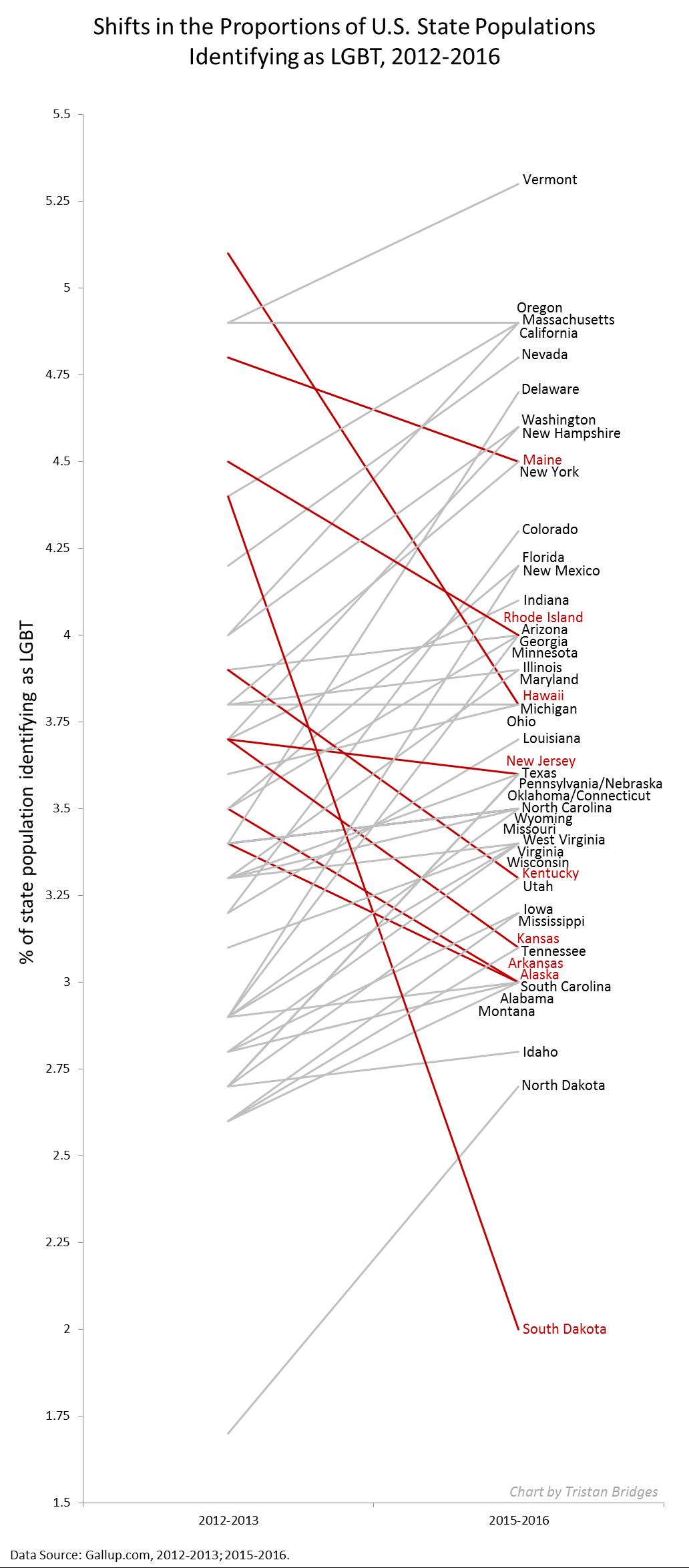 Presentation of data is important. And while the report might help you realize, if you’re LGBT, that you might enjoy living in Vermont or Hawaii more than Idaho or Alabama if living around others who share your gender or sexual identity is important to you, that’s a fact that probably wouldn’t surprise many. I’d rather see maps illustrating proportions of LGBT persons by population density rather than by state. I don’t think we’d be shocked by those results either. But it seems like it would be provide a much better picture of the shifts documented by the report than state-level data allow.
Presentation of data is important. And while the report might help you realize, if you’re LGBT, that you might enjoy living in Vermont or Hawaii more than Idaho or Alabama if living around others who share your gender or sexual identity is important to you, that’s a fact that probably wouldn’t surprise many. I’d rather see maps illustrating proportions of LGBT persons by population density rather than by state. I don’t think we’d be shocked by those results either. But it seems like it would be provide a much better picture of the shifts documented by the report than state-level data allow.
Tristan Bridges, PhD is a professor at the University of California, Santa Barbara. He is the co-editor of Exploring Masculinities: Identity, Inequality, Inequality, and Change with C.J. Pascoe and studies gender and sexual identity and inequality. You can follow him on Twitter here. Tristan also blogs regularly at Inequality by (Interior) Design.

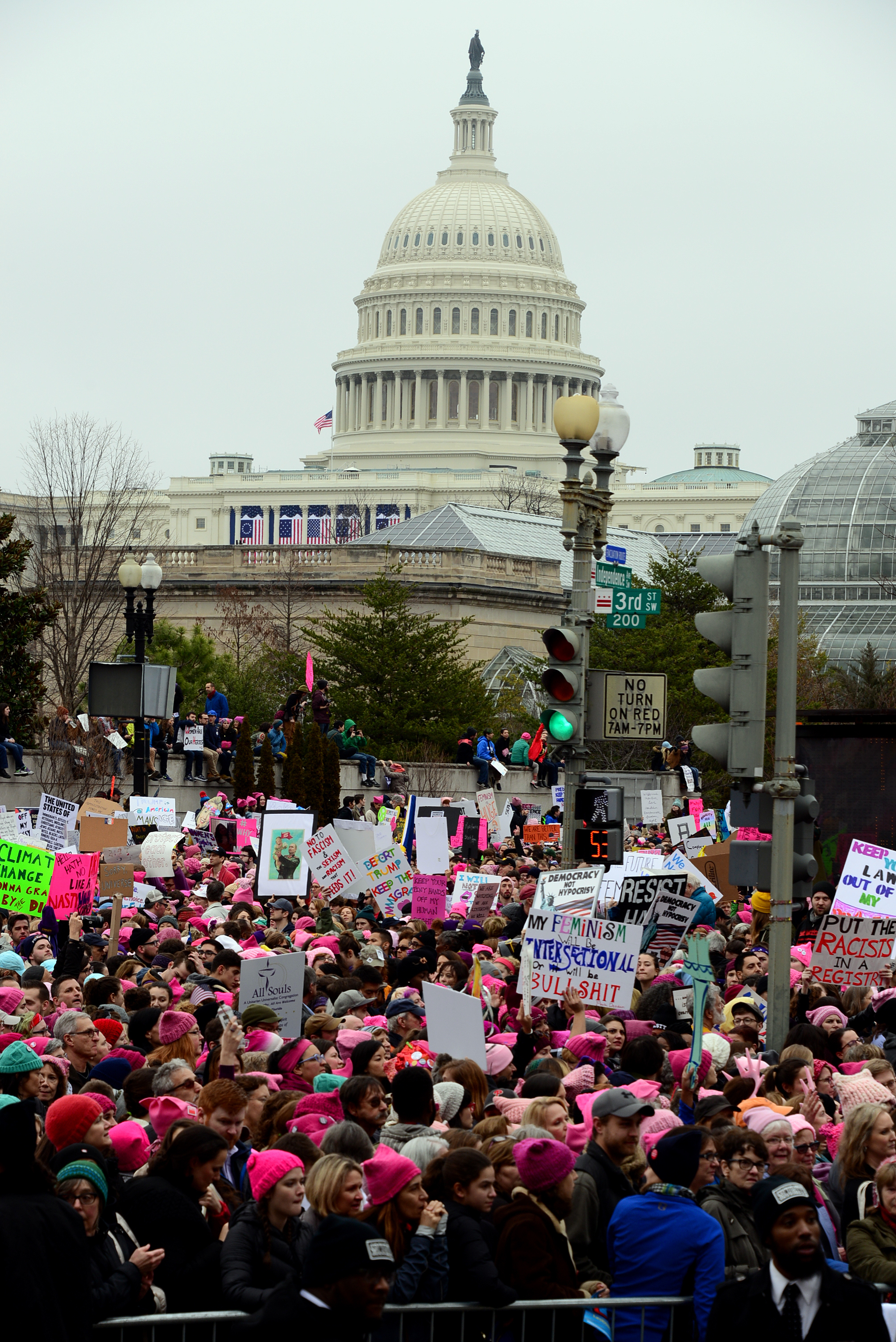
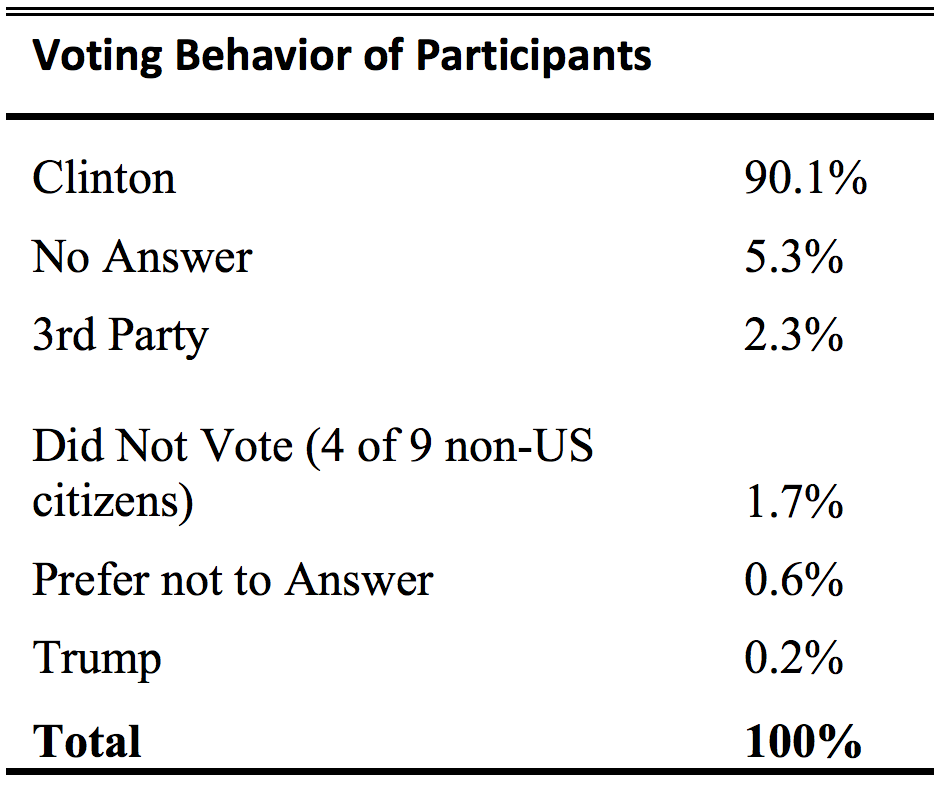
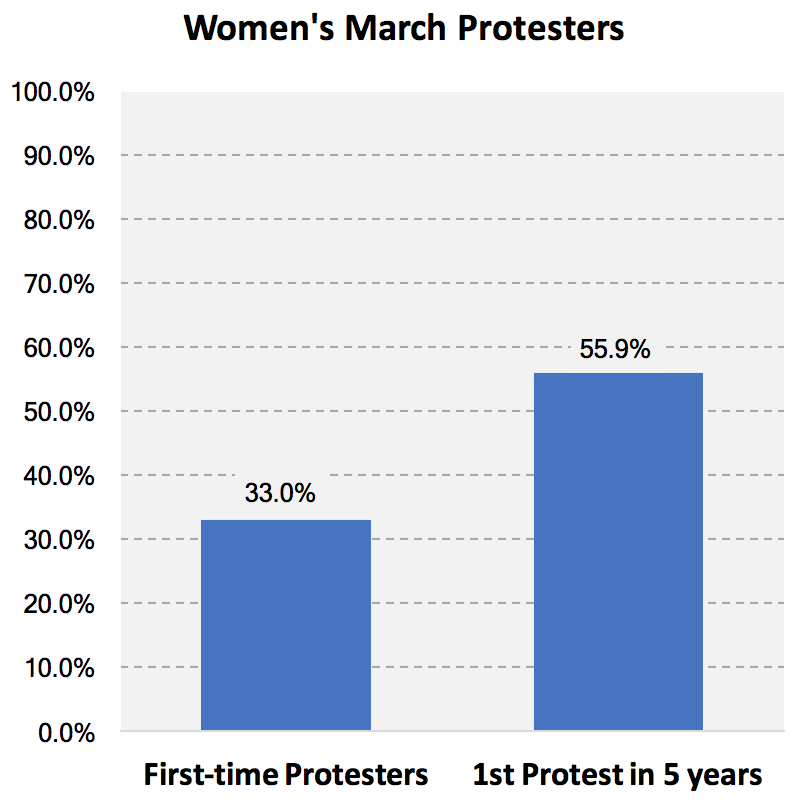
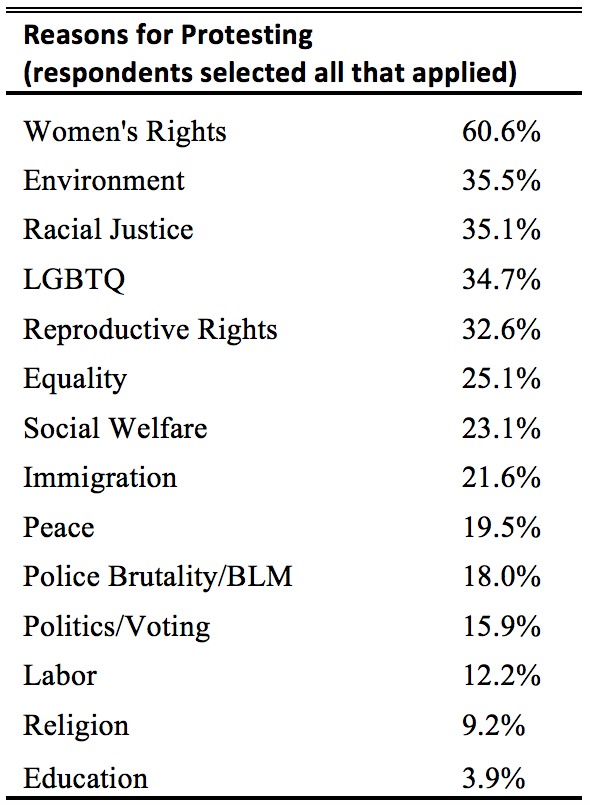
 Will Davies, a politics professor and economic sociologist at Goldsmiths, University of London, summarized
Will Davies, a politics professor and economic sociologist at Goldsmiths, University of London, summarized 





